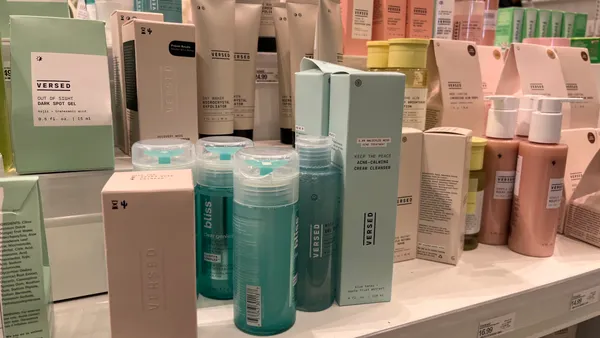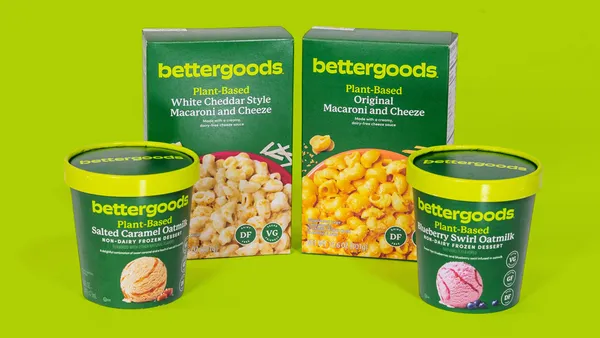Dive Brief:
-
Meal kit sales have “mushroomed” to $5 billion, according to a report from consumer marketing research firm MarketResearch.com’s Packaged Facts unit, thanks to entry from traditional grocers as well as disruptive delivery players like Blue Apron.
-
Blue Apron’s subdued initial public offering last month has more to do with the intense competition in the space and less with any signs of muted consumer interest, according to the report emailed to Retail Dive. Grocery stores are the most common source, ahead of the closely watched delivery sector led by Blue Apron (with a 17% share) and followed in the top five by Freshology, Green Chef, HelloFresh and Home Bistro, according to June 2017 consumer survey data in the research report.
-
Three-quarters of U.S. adults have heard of these services, and a quarter have taken advantage of at least one free product trial, according to the research, with advertising by meal kit delivery players by far the top source of information. Although there’s some lane-changing and attrition, especially after free or heavily discounted trials, almost all (97%) meal kit subscribers are using the company they first signed with and 90% would recommend the services to their friends.
Dive Insight:
Amazon, via its Amazon Technologies unit, last week filed a trademark application for prepared food kits, a sign that it aims to enter the space beyond its current partnerships with Tyson Foods and with Martha Stewart’s “Martha & Marley Spoon through AmazonFresh.” As of March AmazonFresh customers in New York, San Francisco, Dallas and Philadelphia have been able to purchase a Martha & Marley Spoon meal kit that includes the ingredients for a two-person meal.
Amazon’s entry into meal kits only fuels the intense competition in this space, especially considering the synergies between meal kit subscribers and shoppers who frequent Whole Foods, which Amazon is set to acquire for $13.7 billion. Packaged Facts calls the list of companies in the meal kit space a “food industry ‘Who’s Who” including, along with Amazon, Campbell Soup, Kroger, Martha Stewart, Peapod, Publix, Tyson and Unilever.
“Meal kit delivery services are a specialized sector but widely disruptive force in the food industry,” Packaged Facts research director David Sprinkle said in a statement emailed to Retail Dive. “This space is the most striking example of the movement toward greater convenience in getting fresh foods to the consumer. And new approaches to fresh food groceries are [what] consumers are most interested in, and what will determine the winners and losers of the current food industry re-set.”
Saving time is prized by meal kit users the most, but quality, variety and healthy meal selections are also highly valued, as are learning how to cook new things and sharing meals and experiences, according to Packaged Facts.
Millennials in particular like the experiential aspect. “A critic might say that meal kits are the culinary equivalent to paint-by-number, but the opposite is true,” Sprinkle said. “Meal kits and their illustrated recipes drive home the point, especially to Millennials and the rising Gen Z, that cooking is mostly about applying age-old, do-try-this-at home preparation techniques to fresh, whole foods and ingredients. That holds for learning how to cook, as well as expanding, increasing the healthfulness of, and internationalizing your home meal repertoire.”














